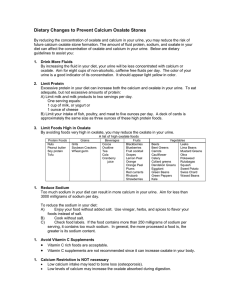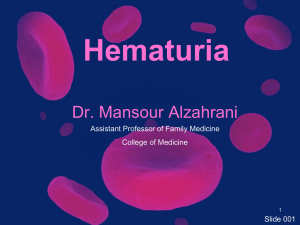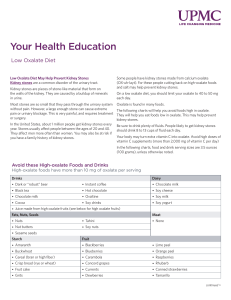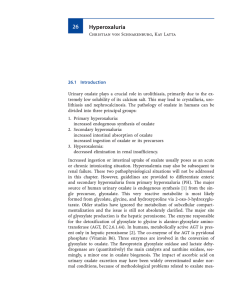A Combined Transport-Kinetics Model for Growth of Renal Calculi in... and Microgravity
advertisement
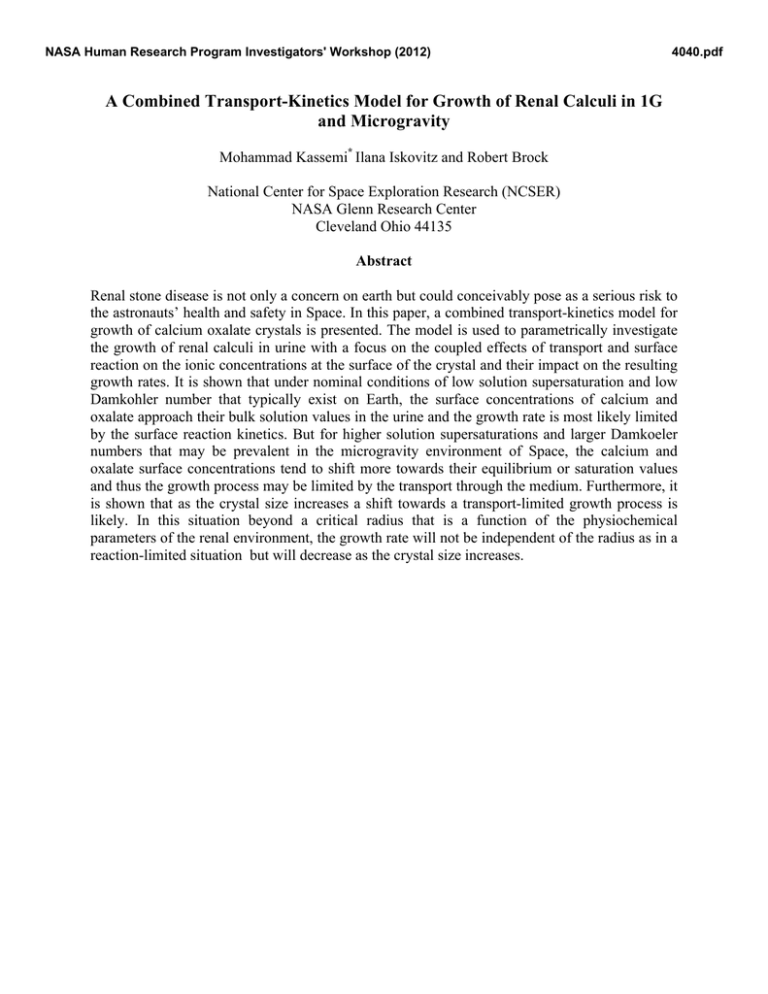
NASA Human Research Program Investigators' Workshop (2012) 4040.pdf A Combined Transport-Kinetics Model for Growth of Renal Calculi in 1G and Microgravity Mohammad Kassemi* Ilana Iskovitz and Robert Brock National Center for Space Exploration Research (NCSER) NASA Glenn Research Center Cleveland Ohio 44135 Abstract Renal stone disease is not only a concern on earth but could conceivably pose as a serious risk to the astronauts’ health and safety in Space. In this paper, a combined transport-kinetics model for growth of calcium oxalate crystals is presented. The model is used to parametrically investigate the growth of renal calculi in urine with a focus on the coupled effects of transport and surface reaction on the ionic concentrations at the surface of the crystal and their impact on the resulting growth rates. It is shown that under nominal conditions of low solution supersaturation and low Damkohler number that typically exist on Earth, the surface concentrations of calcium and oxalate approach their bulk solution values in the urine and the growth rate is most likely limited by the surface reaction kinetics. But for higher solution supersaturations and larger Damkoeler numbers that may be prevalent in the microgravity environment of Space, the calcium and oxalate surface concentrations tend to shift more towards their equilibrium or saturation values and thus the growth process may be limited by the transport through the medium. Furthermore, it is shown that as the crystal size increases a shift towards a transport-limited growth process is likely. In this situation beyond a critical radius that is a function of the physiochemical parameters of the renal environment, the growth rate will not be independent of the radius as in a reaction-limited situation but will decrease as the crystal size increases.

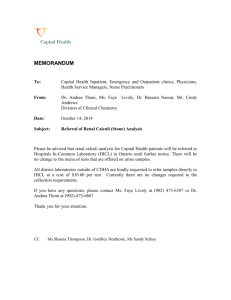
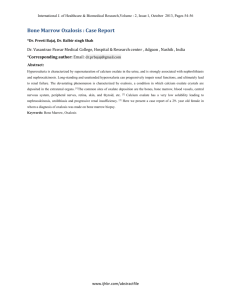



![2012 [1] Rajika L Dewasurendra, Prapat Suriyaphol, Sumadhya D](http://s3.studylib.net/store/data/006619083_1-f93216c6817d37213cca750ca3003423-300x300.png)

